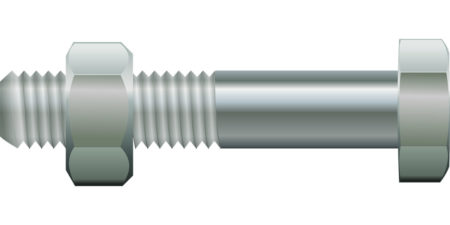 This is the sixth installment of our “Why Do I Care?” series. Every so often, we’ll blog about some of the questions people new to the gasket industry may be looking for more information about. Click the links below to read the first five installments:
This is the sixth installment of our “Why Do I Care?” series. Every so often, we’ll blog about some of the questions people new to the gasket industry may be looking for more information about. Click the links below to read the first five installments:
This week, we’re going to talk about torque retention (or torque loss, depending on your particular viewpoint) and how it affects your gasket performance. Torque retention is related to many of the topics previously discussed, but we thought we’d take a closer look at it specifically.
Torque Retention
Torque retention isn’t necessarily something that can be measured and published as a gasket material property, but compressibility, recovery, and creep relaxation values have a direct effect on a good torque retention value (along with a good seal). Below, we have listed a few general questions to help those of you that are less familiar with this concept start to gain an understanding.
1. What exactly is torque retention?
It is a measurement of how well a bolted joint retains the force applied to each bolt. How much of the initial torque is retained by the fastener after a certain time or exposure? Zero percent torque retention means that the bolts have lost all of their load and are no longer compressing the gasket and thusly, the bolts are falling out and the joint has failed.
2. What causes torque retention to change?
Changes in the gasket due to time or temperature are the main reasons you tend to see changes in torque retention. Other reasons would have to do with the design of the joint, the assembly of the joint, the bolting procedure, the fasteners themselves, and other factors.
3. What do I do about torque loss?
After the initial heat cycle, some reduction in torque retention (torque loss) is expected and compensated for with the initial bolt load. In an ideal situation, bolts are just re-tightened and the retention should be sufficient. While this isn’t always possible, the installation load is typically high enough to achieve the initial seal, withstand creep and load loss, and still maintain sufficient load for a long-term seal.
4. What should I look for in materials to maximize retention (or minimize loss)?
The answer to this really depends on the requirements of your application and the conditions of your joint, so you’ll never find one perfect material. However, when selecting a material, you want to pay attention to creep relaxation values. The lower the better, meaning that a material with low creep will provide more “push-back” on the bolts and thusly, retain more torque.
5. What else should I know?
All compressible gasket materials have some level of creep or load loss which can be expected. The challenge as a designer is to provide sufficient load for a long-term seal.
Now That You Know
Knowing about and understanding torque retention can help you to better select a material for your joint. It can also help you to understand what you are seeing after the application begins to log runtime hours. You can always expect some reduction in torque retention, the key is to understand why it is happening and how much is too much.
Is the cup half full or half empty? Torque retention or torque loss? If you are interested in subscribing to Sealed-In’s blog posts, email sales@mtigasket.com.

This is the sixth installment of our “Why Do I Care?” series. Every so often, we’ll blog about some of the questions people new to the gasket industry may be looking for more information about. Click the links below to read the first five installments:
This week, we’re going to talk about torque retention (or torque loss, depending on your particular viewpoint) and how it affects your gasket performance. Torque retention is related to many of the topics previously discussed, but we thought we’d take a closer look at it specifically.
Torque Retention
Torque retention isn’t necessarily something that can be measured and published as a gasket material property, but compressibility, recovery, and creep relaxation values have a direct effect on a good torque retention value (along with a good seal). Below, we have listed a few general questions to help those of you that are less familiar with this concept start to gain an understanding.
1. What exactly is torque retention?
It is a measurement of how well a bolted joint retains the force applied to each bolt. How much of the initial torque is retained by the fastener after a certain time or exposure? Zero percent torque retention means that the bolts have lost all of their load and are no longer compressing the gasket and thusly, the bolts are falling out and the joint has failed.
2. What causes torque retention to change?
Changes in the gasket due to time or temperature are the main reasons you tend to see changes in torque retention. Other reasons would have to do with the design of the joint, the assembly of the joint, the bolting procedure, the fasteners themselves, and other factors.
3. What do I do about torque loss?
After the initial heat cycle, some reduction in torque retention (torque loss) is expected and compensated for with the initial bolt load. In an ideal situation, bolts are just re-tightened and the retention should be sufficient. While this isn’t always possible, the installation load is typically high enough to achieve the initial seal, withstand creep and load loss, and still maintain sufficient load for a long-term seal.
4. What should I look for in materials to maximize retention (or minimize loss)?
The answer to this really depends on the requirements of your application and the conditions of your joint, so you’ll never find one perfect material. However, when selecting a material, you want to pay attention to creep relaxation values. The lower the better, meaning that a material with low creep will provide more “push-back” on the bolts and thusly, retain more torque.
5. What else should I know?
All compressible gasket materials have some level of creep or load loss which can be expected. The challenge as a designer is to provide sufficient load for a long-term seal.
Now That You Know
Knowing about and understanding torque retention can help you to better select a material for your joint. It can also help you to understand what you are seeing after the application begins to log runtime hours. You can always expect some reduction in torque retention, the key is to understand why it is happening and how much is too much.
Is the cup half full or half empty? Torque retention or torque loss? If you are interested in subscribing to Sealed-In’s blog posts, email sales@mtigasket.com.

This is the sixth installment of our “Why Do I Care?” series. Every so often, we’ll blog about some of the questions people new to the gasket industry may be looking for more information about. Click the links below to read the first five installments:
This week, we’re going to talk about torque retention (or torque loss, depending on your particular viewpoint) and how it affects your gasket performance. Torque retention is related to many of the topics previously discussed, but we thought we’d take a closer look at it specifically.
Torque Retention
Torque retention isn’t necessarily something that can be measured and published as a gasket material property, but compressibility, recovery, and creep relaxation values have a direct effect on a good torque retention value (along with a good seal). Below, we have listed a few general questions to help those of you that are less familiar with this concept start to gain an understanding.
1. What exactly is torque retention?
It is a measurement of how well a bolted joint retains the force applied to each bolt. How much of the initial torque is retained by the fastener after a certain time or exposure? Zero percent torque retention means that the bolts have lost all of their load and are no longer compressing the gasket and thusly, the bolts are falling out and the joint has failed.
2. What causes torque retention to change?
Changes in the gasket due to time or temperature are the main reasons you tend to see changes in torque retention. Other reasons would have to do with the design of the joint, the assembly of the joint, the bolting procedure, the fasteners themselves, and other factors.
3. What do I do about torque loss?
After the initial heat cycle, some reduction in torque retention (torque loss) is expected and compensated for with the initial bolt load. In an ideal situation, bolts are just re-tightened and the retention should be sufficient. While this isn’t always possible, the installation load is typically high enough to achieve the initial seal, withstand creep and load loss, and still maintain sufficient load for a long-term seal.
4. What should I look for in materials to maximize retention (or minimize loss)?
The answer to this really depends on the requirements of your application and the conditions of your joint, so you’ll never find one perfect material. However, when selecting a material, you want to pay attention to creep relaxation values. The lower the better, meaning that a material with low creep will provide more “push-back” on the bolts and thusly, retain more torque.
5. What else should I know?
All compressible gasket materials have some level of creep or load loss which can be expected. The challenge as a designer is to provide sufficient load for a long-term seal.
Now That You Know
Knowing about and understanding torque retention can help you to better select a material for your joint. It can also help you to understand what you are seeing after the application begins to log runtime hours. You can always expect some reduction in torque retention, the key is to understand why it is happening and how much is too much.
Is the cup half full or half empty? Torque retention or torque loss? If you are interested in subscribing to Sealed-In’s blog posts, email sales@mtigasket.com.
